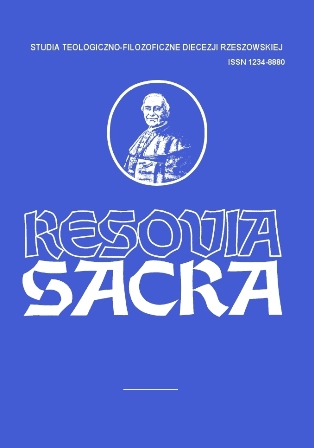
We kindly inform you that, as long as the subject affiliation of our 300.000+ articles is in progress, you might get unsufficient or no results on your third level or second level search. In this case, please broaden your search criteria.

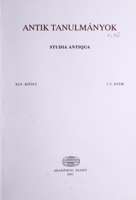
RIMÓCZI-HAMAR MARTA: HORATIUS, VERGILIUS ÉS MAECENAS. Barátság és hűség Augustus Rómájában. Apollo Könyvtár 20. Akadémiai Kiadó, Budapest 2000. 177 lap. FARKAS ZOLTÁN—HORVÁTH LÁSZLÓ—MAYER GYULA: ÓGÖRÖG OLVASÓ- ÉS GYAKORLÓKÖNYV. TypoTEX Kiadó, Budapest 1998. 200 lap. Ugyanazok: Ógörög olvasó- és gyakorlókönyv. Másodikjavított kiadás. TypoTEX Kiadó, Budapest 1999. 203 lap. JOHANN COOK: THE SEPTUAGINT OF PROVERBS. JEWISH AND/OR HELLENISTIC PROVERBS? CONCERNING THE HELLENISTIC COLOURING OF LXX PROVERBS. Leiden—New York—Köln 1997. XX + 391 lap. PARADISE INTERPRETED. REPRESENTATIONS OF BIBLICAL PARADISE IN JUDAISM AND CHRISTIANITY. Ed. by GERARD P. LUTTIKHUIZEN (Leiden—Boston—Köln 1999 Brill) (Themes in Biblical Narrative Jewish and Christian Traditions) 208 lap. TH. BAIER: WERK UND WIRKUNG VARROS IM SPIEGEL SEINER ZEITGENOSSEN. Von Cicero bis Ovid. (Hermes Einzelschriften 73. Stuttgart 1997.) 208 lap. OVID. WERK UND WIRKUNG. FESTGABE FÜR MICHAEL VON ALBRECHT ZUM 65. GEBURTSTAG. Hrsg. Von WERNER SCHUBERT I—II. Frankfurt 1999. (Studien zur Klassischen Philologie 100.) 1220 lap. RHIANNON ASH: ORDERING ANARCHY. ARMIES AND LEADERS IN TACITUS’ HISTORIES. London 1999. X + 246 lap. STEPHEN HINDS: ALLUSION AND INTERTEXT. DYNAMICS OF APPROPRIATION IN ROMAN POETRY. Cambridge University Press, Cambridge—New York—Melbourne 1998. 155 lap.
More...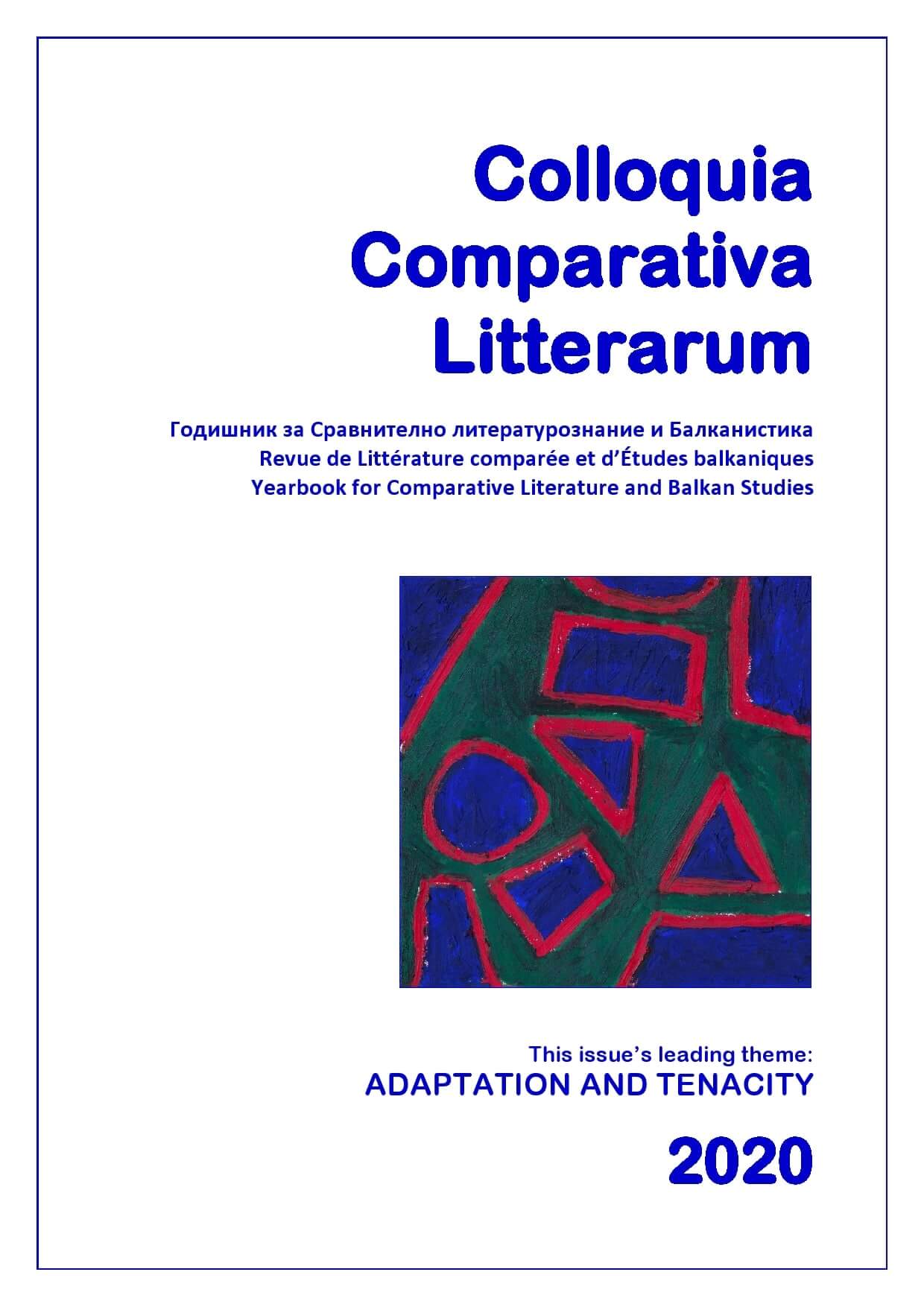
In the Western European novel, the death of the nobleness of the soul brings to life the “social realism” characteristic of Balzac’s work. This change is signified by the transformation of the novel’s protagonist from a moral into a social individual (S. Hadzhikosev). Later, this development will logically progress into the ascension of the antihero and conclude with the “cynical realism” (“réalisme cynique”), preached by authors like Frédéric Beigbeder. Reflecting on several major novels written in the 19th and 20th centuries, this article strives to answer the principal question of whether the novelist could take another realistic path, and tries to imagine what this path would look like.
More...
Ojcze nasz to najważniejsza modlitwa chrześcijan. Jako starożytny tekst biblijny od wieków poddawana jest badaniom oraz tłumaczona na nowo wraz z rozwojem języków docelowych. Ze względu na powszechność tej modlitwy takie zmiany nie zachodzą niepostrzeżenie i budzą sprzeciw członków różnych wspólnot wyznaniowych. Niniejszy artykuł przedstawia specyfikę przekładu tekstów liturgicznych na podstawie analizy tłumaczeń na język szwedzki. Pokazana zostaje historia szwedzkiego tłumaczenia modlitwy Ojcze nasz, aż do opublikowania kontrowersyjnej wersji ekumenicznej w 1996 r. Przeanalizowane zostają wybrane różnice w „starym” i „nowym” tłumaczeniu oraz najważniejsze postulaty w debacie nad przyjęciem wersji ekumenicznej. Artykuł zamyka przytoczenie obecnego stanowiska kościoła katolickiego i protestanckiego wobec nowej wersji oraz dyskusja nad nowoczesnością i tradycją we współczesnych tłumaczeniach Modlitwy Pańskiej. Studium pozwala zobaczyć, w jaki sposób zmiany w obszarze przekładu mogą spowodować poruszenie społeczne i konflikt, jeśli nie są dostosowane do aktualnych przekonań reprezentantów danej kultury. // "Our Father" is the most essential Christian prayer. Being an ancient biblical text it has been translated and interpreted through the ages as target languages were developing. Due to the universality of this prayer, such changes do not occur unnoticed and raise opposition of members of various religious communities. This article presents the specifics of the translation of liturgical texts based on the analysis of translations into Swedish. The history of the Swedish translation of the "Our Father" prayer is covered up to the publication of the controversial ecumenic version in 1996. Selected differences in the "old" and "new" translations and the most important postulates in the debate on the adoption of the ecumenical version are analyzed. The article ends with a description of the current position of the Catholic and Protestant Church regarding the new version and a discussion on modernity and tradition in translations of the Lord's Prayer. The study shows how changes in the area of translation can cause social uproar and conflict, if they are not adapted to the current convictions of representatives of a given culture.
More...
Report from the scientific symposium Mary, Mother of God, in theology and Christian art, Stadniki, May 6th, 2021
More...
The aim of this paper is to provide a starting point for a comparison between the four edited versions of the Palaea Historica: the Greek one, the first Slavonic translation, the Romanian translation and the recently published second Slavonic translation. The four versions diverge from the very beginning, with the Greek and the first Slavonic translation providing a discussion on the Holy Trinity before moving on to God’s creation of the world, whereas the Romanian version omits the theological introduction and expands the cosmogonical portion with a paraphrase of Epiphanius’ Hexaemeron. The second Slavonic translation omits the entire description of the six days of creation in order to focus on Adam and the symbolic importance of his name. Another point of interest is the treatment of a fragment condemning the heretical view that Satan was Cain’s father, which is not conserved in the first Slavonic version and the Romanian versions.
More...
It can be assumed that two biblical myths – about Adam and Eve leaving the Garden of Eden and about the builders from Babel – are interesting expressions of the utopian imagination, because these myths narrate about two places where projects of sufficiently perfect social order were implemented in two different ways. At present, the school is one of the places that could be understood as the ambiguous effect of an implemented utopia of the industrial revolution era; the school is an education space designed as an important part of the project of a sufficiently perfect social order. Two original readings of the mentioned biblical myths – by Erich Fromm and George Steiner – shall contribute some new themes and outlooks to the discussion of the condition of the modern school and the discourses of critical pedagogy or the pedagogy of resistance and hermeneutic pedagogy.
More...
In his book “The Myth of the Birth of the Hero” (1909), the psychoanalyst Otto Rank identified in various cultures numerous versions of the same narrative which was very close in content to the Oedipus myth. The structure of this repetitive plot is the following: a son of a king, sentenced to death by his father, survives miraculously and grows up far away from his family; when grown-up, he returns to his hometown, murders his father and inherits the throne. The paper argues that this plot has come into being as a narrative aimed at legitimizing the right of existence of a newly formed community by presenting its leader as the legitimate successor of the ruler of the group from which the new community has separated. After its dramaturgical rendition by the ancient Greek tragedians, the Oedipus plot has acquired a new meaning – it started functioning as a story of the great sinner.
More...
L’article présente l’histoire des fouilles archéologiques polonaises à Faras, au Soudan, dans le contexte des changements politiques de la seconde moitié du xxe siècle, à partir des découvertes qui ont eu lieu avant quele professeur Kazimierz Michałowski ne commence les fouilles archéologiques en 1961. Les recherches des archéologues américains (1907-1910), allemands (1907-1908) et britanniques (1911) sont discutées par la suite, demême qu’une documentation iconographique, suivie par les différentes étapes des découvertes de la cathédralede Faras et des peintures murales au cours de quatre campagnes archéologiques polonaises, achevées en 1964, enrelation avec l’activité de Kazimierz Michałowski. La suite concerne l’histoire et la manière dont le professeur Michałowski a annoncé ses découvertes au Soudan, ainsi que les expositions individuelles, voire temporaires, dans les pays européens, surtout au Musée national de Varsovie, et une exposition permanente préparée dans lacapitale de la Pologne en 1972. L’article étudie aussi la manière dont le régime communiste a influencé la présentation des découvertes et comment les Polonais ont souhaité présenter l’art chrétien pendant la répression du Catholicisme dans leur pays, à une époque dominée par la censure de toutes les expositions et publications scientifiques. En conclusion, cette recherche évalue les résultats de l’étude scientifique des monuments fouillés lors des campagnes archéologiques, et propose la vérification (à l’avenir) de la datation des pièces polychromes, de mêmequ’une discussion de l’ensemble du programme iconographique de l’intérieur de la cathédrale de Faras.
More...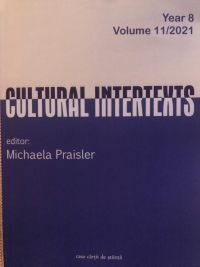
This article discusses the original translation style of St. Euthymius the Athonite (10th11th centuries), a great Georgian monk working in the Iviron Monastery of Athos (Greece), which was called an ‘omission-addition style’ in the scientific literature, and was entirely conditioned not by linguistic but by cultural-religious context. The main goal of the article is to examine that unique phenomenon we are dealing with in the form of his translations, that sheds light on how a translator may turn linguistic tools into cultural vectors of a society, a country, determining the main path for spiritual and intellectual development of the nation in a particular historical epoch and along the centuries. From the rich Greek theological literature, Euthymius the Athonite selected for translation those works that would best reflect the knowledge accumulated in that field at the time, and presented them to Georgian readers, still less knowledgeable in theological matters, in such a way that would best suit them and strengthen their Christian faith, on the one hand, and introduce them to the advanced Western thought, on the other. Research focus is on the translations of theological content. Based on the comparative analysis of the Greek-Georgian texts, I examine those methods and means that Euthymius the Athonite used to keep the Georgian nation from possible religious threats, misunderstandings, and difficulties that accompanied the misinterpretation of religious texts in the Middle Ages. Euthymius the Athonite laid a solid foundation for the process of Europeanization of Georgian literature and culture, which his descendants continued with dignity.
More...
The article discusses two historical events taken from texts from the Holy Scripture – the Old and the New Testaments, and a spiritual view on human soul, as found in the Holy tradition of the Orthodox church: they support the thesis that, according to the method of allegorical interpretation, the three evidences point to three inner stages through which human soul passes in its transition to a holistic spiritual development: from the act of the Holy Baptism to the entry into the Kingdom of God.
More...

In this study, we propose the analysis of a series of biblical quotations in the last Cervantine novel in order to identify the role that these could play in highlighting the meanings of the book and in the narrative strategy of the author.
More...
Au xviiie siècle, des peintres ukrainiens et serbes formés à l’école d’art de la Laure de Kyïv-Petchersk ont inauguré le processus de changement de la peinture religieuse serbe qui, dans la région administrée par le siège métropolitain de Karlovci, est passée d’un style ‘traditionnel’ (ou ‘manière post-byzantine’) à un style plus ‘occidental’ (‘baroque’). À première vue, il pourrait sembler inhabituel que les influences occidentales décisives pour la peinture serbe du xviiie siècle ne soient pas arrivées directement de l’Occident – à savoir de Vienne, l’un des principaux centres de l’art baroque européen et capitale de l’empire dont le territoire englobait le métropolitain de Karlovci -, mais de l’espace artistique ukrainien, déjà ‘occidentalisé’ par les courants venus de la Laure de Kyïv-Petchersk. Vers le milieu du xviiie siècle, cette Laure de Kyïv-Petchersk et son Académie de théologie étaient devenus des soutiens religieux solides et fiables pour l’Orthodoxie, sous la protection politique du tsar de Russie, et promouvaient la science théologique, peut-être la plus forte de la sphère orthodoxe de l’époque. En conséquence, l’Académie de théologie de Kyïv avait commencé à occuper une place de plus en plus importante dans la topographie chrétienne de l’Europe de l’Est. Cette école accueillait des étudiants de toute l’Ukraine et de la Russie, mais aussi des Biélorusses, des Polonais, des Lituaniens et des Serbes. Au xviiie siècle, sur une période de trente ans, 28 Serbes ont reçu une éducation à l’Académie de théologie de Kyïv. De même, au milieu du xviiie siècle, des missionnaires de Kiev rejoignent la communauté de Karlovci, sur invitation des dignitaires de l’Église serbe, en apportent avec eux une aide spirituelle indispensable. L’arrivée dans la commu-nauté de Karlovci des premiers enseignants, peintres, livres et icônes en provenance de Kiev, est marquée aussi par l’arrivée de certains modèles politiques russes. Dans les rangs des intellectuels, plusieurs peintres serbes ont été formés à Kyïv, dont les principaux représentants de la première vague d’européanisation dans la peinture serbe: Dimitrije Bačević et Stefan Tenecki. Le moment décisif pour l’ouverture de la peinture serbe à la peinture kyïvienne occidentalisée s’est produit grâce à l’initiative du patriarche Arsenije iv Jovanović Šakabenta (1725-1748). En effet, en 1743, ce patriarche avait officiellement interdit, dans une lettre circulaire, le travail de tous les soi-disant peintres d’icônes inexpérimentés et non éduqués qui travaillaient à l’ancienne. C’est à cette époque qu’il avait fait appelé à sa cour l’Ukrainien Jov Vasilijevič (vers 1700-après 1760), un maître qui allait donner une nouvelle forme aux courants de l’art serbe. La lettre mentionnée du patriarche Šakabenta indique que les peintres serbes de Karlovci pouvaient apprendre le métier auprès de son peintre de cour autour duquel, semblerait-il, s’était formé la première école de peinture jamais fondée dans le milieu culturel serbe. À travers cette école, le maître Jov Vasilijevič et ses collaborateurs allaient exercer une influence décisive sur toute la génération des peintres (civiques) serbes – ainsi qu’en témoigne l’abandon de l’ancienne manière. L’in-fluence culturelle et artistique ukrainienne dans le siège métropolitain de Karlovci a perduré des années 1720 aux années 1760. Durant cette période, tous les éléments occidentaux ont, sans doute, dû être soumis à la super-vision des théologiens orthodoxes orientaux de Kyïv. Dans la seconde moitié du xviiie siècle, plus précisément à partir de la huitième décennie, les liens culturels et spirituels ukrainiens-serbes ont commencé à s’affaiblir en raison du déclin des liens politiques russes-serbes. Avec le déclin de la sphère artistique de Kyïv, les modèles artistiques et culturels en provenance directe de Vienne se sont alors renforcés. À partir de cette époque, c’est l’Académie de Vienne qui était destinée à former les peintres serbes, apportant dans leur pays des éléments occidentaux et le style de la peinture autrichienne.
More...
United Nations and Council of Europe documents recognize human life as a universal value. However, there are differences in the application of this principle in practice, since exceptions are allowed by the laws of different countries allowing medical abortion, assisted suicide, euthanasia, and the death penalty. In addition, citizens are not unanimous on the question of when the ending of one’s own life or that of another is justified. The aim of the article is to find out the relationship between the religious identity of the Latvian population and attitudes towards four morally controversial phenomena such as abortion, euthanasia, suicide, and the use of the death penalty, using data from the European/World Values Studies of 1996 and 2021. The article uses cluster analysis and linear regression. This study finds that in 2021, society has demonstrated less justifiability of abortion, euthanasia and suicide compared to 1996. Statistically significant differences between religious and non-religious populations are observed in attitudes towards abortion and euthanasia, while differences in attitudes towards suicide and the death penalty are less pronounced.
More...
Apocalyptic visions go beyond Christian eschatology and permeate our present imagination. Not so much with already bygone symbolism or the terror of bloody carnage, as with the vague sense of an ending, fuelled by historical conditions – the Holocaust, the nuclear crisis, or the more contemporary global threats of a viral pandemic or climate change. The 11th issue of Colloquia Humanistica is devoted to various understandings of the end, introduced by the topics of apocalypse, disaster and messianic time. The articles gathered in the volume may be read separately as examples of analysis of several end-time-directed narratives, but they also constitute a whole that may indicate the specific features of thinking about the end.
More...
The purpose of the article is to generalise and clarify the sources of the musical texts of irmoses’ canons of the Baptism of Jesus and the Epiphany of Church Prostopinije by Bokshay-Malynych in 1906 through the prism of close relation with the manuscript and printed irmologions of the XVII-XIX centuries. The research methodology is based on a complex system approach combining a critical understanding of literature, source studies, music-analytical, comparative methods in the analysis of musical texts. In the comparative analysis of irmoses of different lists, we use the scientific provisions by O. Tsalai-Yakymenko regarding the formative principles of time dimensional metric in sacral monody. The scientific novelty of the research consists in clarifying the sources of the musical texts of irmoses’ canons of the Baptism of Jesus and the Epiphany of Church Prostopinije by Bokshay-Malynych in 1906, structuring of the musical material, features of changes in the formation of condensed forms of singing liturgical texts. Conclusions. The analysis of irmoses’ musical texts of the Baptism of Jesus and the Epiphany of Prostopinije shows a direct connection with the manuscript and printed irmologions. The main differences in Prostopinije's irmoses are caused due to the orientation of church singers to concise and simplified forms of singing liturgical texts, the use of several typical chants, as a result of which the new intonation formations have taken place. Comparisons of musical texts from various sources demonstrate the peculiarities of the pattern formations, the preservation and renewal of ancient forms of sacral monody in regional church singing practice at the beginning of the 20th century.
More...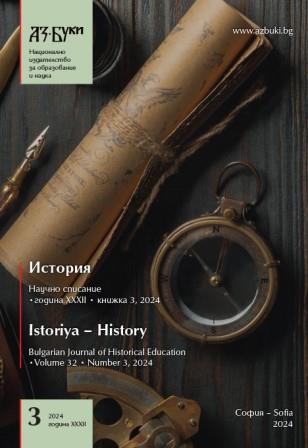
The article examines the polemical anti-Latin writings “The Tale of how Rome fell away from the Orthodox Greek faith” (according to manuscript TSIAI 1161) and “Word of how Rome fell” (according to manuscript SANU 147) in the context of the theme of apocalyptic prophecies and the expectation of severe, but God’s just punishment for sins committed. A study of these short but message-laden late medieval texts reveals not only the perception of the conflict between East and West among ordinary people, but also the fear of catastrophic consequences for the world as a result of the violation of church tradition. The change of custom also implies an intervention in the plan of the Creator and changes in the physically visible and spiritual world.
More...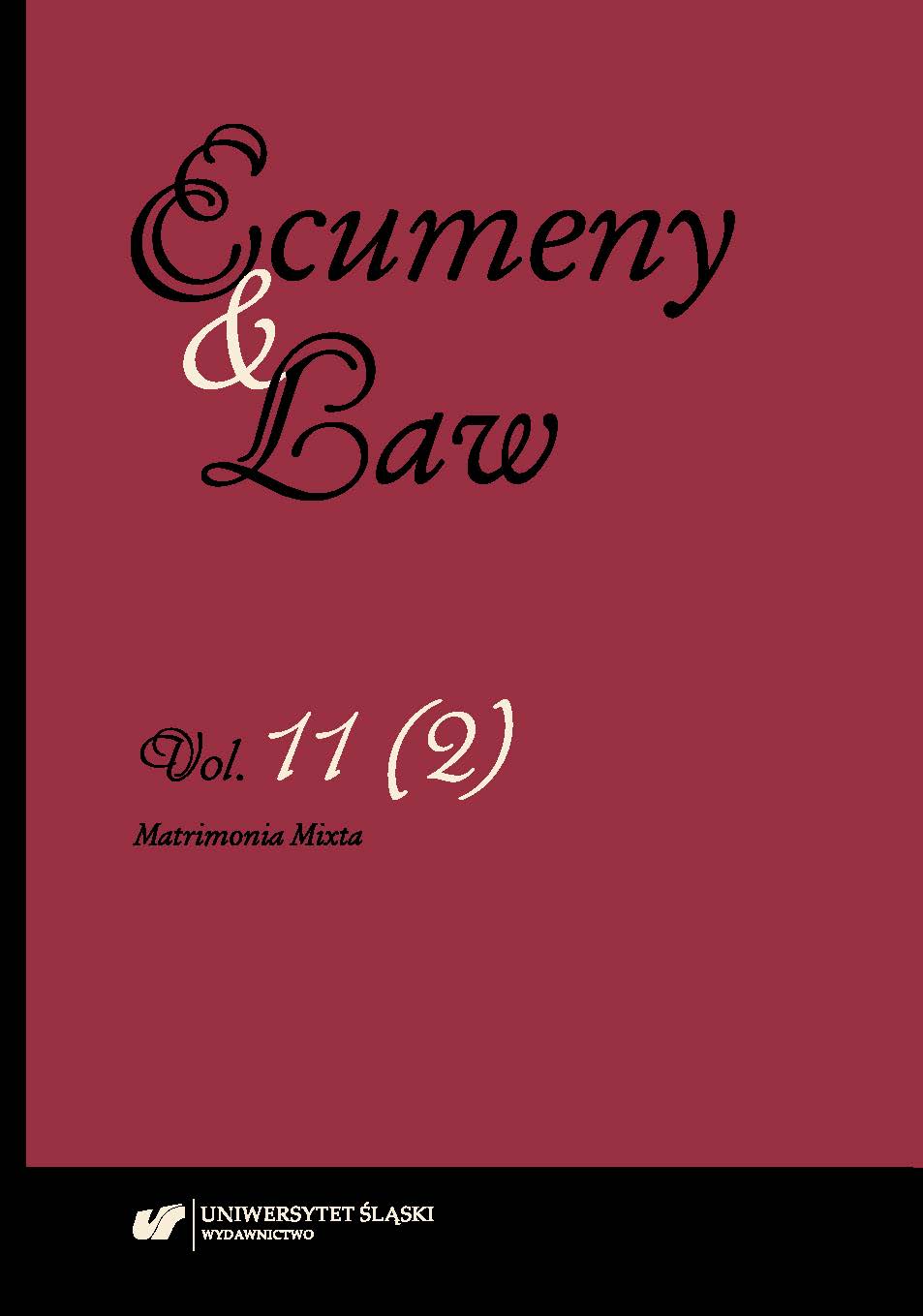
Firstly, the article provides basic information on the biblical teaching on marriage. While the Old Testament sees marriages with numerous offspring as a high value, the New Testament shows a tendency towards celibacy, be it on account of imitating Christ or for the expectation of imminent parousia. The most important author amongst the Fathers of the Church, St. Augustine, made a significant contribution towards forming the Catholic doctrine on marriage upon which drew even the medieval scholastics. In the modern age, the Church complained about the countries which forced their concept of marriage on the Catholic faithful. Even today, the Catholic Church is against the breakdown of marriage by means of divorce. Since the Second Vatican Council, however, there has been a development, for example, as regards contracting marriages between Christians of Catholic and non-Catholic confessions. Prior to the publication of the 1983 Code of Canon Law, this was expressed in the motu proprio of Paul VI Matrimonia mixta, whose regulation did not have to be changed substantially in the Code.
More...
This text outlines an interactive philosophy teaching model conducted among 9th-grade students of 51th Secondary School “Elisaveta Bagryana” – Sofia. The teaching is based on a topic set in the curriculum and concerns the exploration of values in the Old and New Testaments. The model examines the values of Old Testament justice and Christian love in the context of their relationship to society and the individual. It emphasizes the practical nature of both types of values and derives their relevance to specific life situations. The teaching aims to develop the skills of analysis, synthesis, argumentation, discussion, conclusion-drawing, and generalization. The stages of learning follow the sequence: from knowledge of biblical values to skills for defining them in practice, focusing on their competent application in life. The model demonstrates an approach to make learning more challenging and encourage critical thinking in an enjoyable manner. It cultivates a value model rooted in understanding and respecting differences.
More...